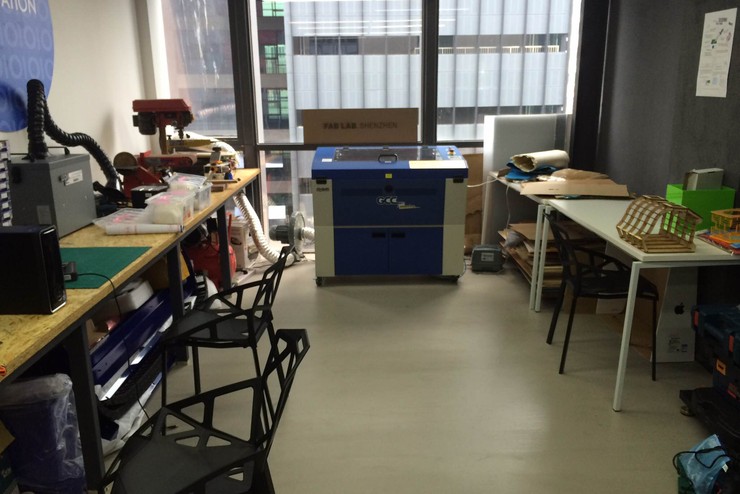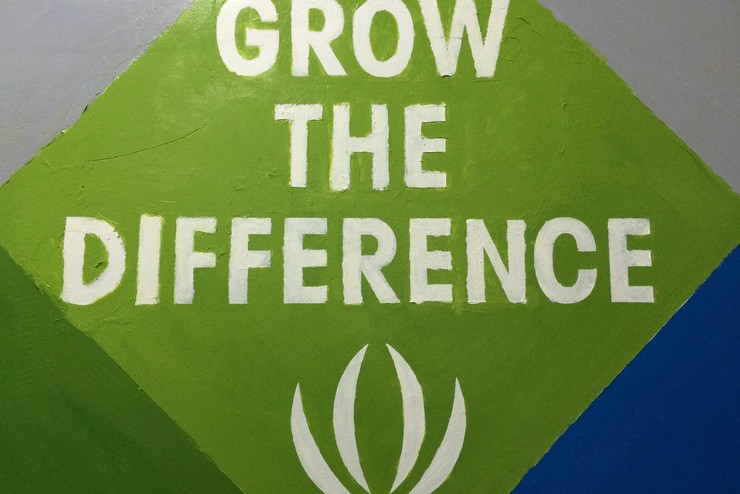
When first thinking about my upcoming trip to China, I’ll be honest that I had absolutely no idea what to expect. Here I was with the opportunity to explore their growing maker culture, having naïvely had no idea this movement had even begun to reach that part of the world. Of course I’m no stranger to the phrase ‘Made In China’, and the fact that most of the electronic productstaking up residence in our homes start their lives as components scattered across various Chinese factory production lines. But I was now being introduced to the idea that China was actively cultivating open spaces and workshop facilities allowing for individual makers to innovate and realise their ideas.
As a designer, maker and business owner actively using digital fabrication tools within a space like this, I was intrigued to see how Chinese makerspaces would compare to those in the UK, in terms of layout, resources, and the nature of the work being carried out. The programme loosely outlined that I would firstly be spending 3-4 days based at Seeed Studio in Shenzhen, getting under the skin of their operations and actively involving myself in projects, then onto a weekend at Shanghai Maker Carnival, before heading back to Shenzhen to visit a number of other spaces that were yet to be determined. This, together with the tight turnaround for organising the trip and obtaining a visa, gave me a sense that I should be prepared to go with the flow, but the first few days were a steep learning curve where I quickly had to grasp the fact that scheduled appointments do not necessarily equate to concrete plans.

This made for a fascinating introduction to Shenzhen to say the least. We braced ourselves to meet representatives from the local government at our induction, rearranged to a later date specifically for this reason, only to see or hear no mention of them on the day. We browsed huge multi-story electronics markets selling everything from resistors and LEDs to 3D printers and robotic hoovers, toured factories specialising in CNC milling and injection moulding, and met with teams running makerspaces offering facilities ranging from co-working space to prototyping resources to small-scale production lines. It was already the afternoon of our third day before those of us on my programme even made it to Seeed studio, but we were welcomed warmly with a tour of their PCB assembly lines (or squares in this case) and a presentation outlining their involvement with supporting makers in developing early prototypes into fully formed products, and providing supply chain management and drop shipping services along the way.
With the whirlwind nature of the trip so far, it’s been hard to take time to stop and reflect fully on the similarities and differences between makerspaces here and in the UK, especially as I’m still yet to have spent more than a morning in one place. Notably, the spaces here seem overwhelming geared towards making in the fields of electronics and industrial design, which is not surprising considering the focus of trade here within these realms. However, I had hoped to find more evidence of creative, craft-based making alongside this, and a mix of digital and more traditional workshop tools that would facilitate more experimental practices. Although wary of attempting to plan anything too specific for next week when we return to Shenzhen, due to our experience so far, I’m starting to formulate design ideas that I hope to be able to develop and begin to prototype within one of these spaces, as a way to actively experience the process of making here in China, and therefore be able to make direct comparisons to my experience back in the UK.
Overall, I’ve found Shenzhen to be a chaotic, non-stop, multi-sensory and ever-changing city, buzzing with all the activity and possibility you’d expect from a rapidly growing environment centred around trade and manufacture, and it’s increasingly hard to get my head around the sheer scale of a place that is completely unrecognisable from it’s humble small town origins of less than 40 years ago. Scanning the landscape from the window of our plane to Shanghai, I was struck by its visual similarity to a circuit board, fittingly symbolic of the core culture of electronics manufacture that permeates every inch of the city. How Shanghai will differ from this remains to be seen, but the Maker Carnival will provide a great opportunity to meet and greet with a number of makers from across the country, and give a wider insight into the making culture that goes on outside of Shenzhen. Watch this space!
From a background in graphic and product design, Fiona now runs her own business in Bristol - The Laser House, offering laser cutting, engraving and design services. Read more about her work here.